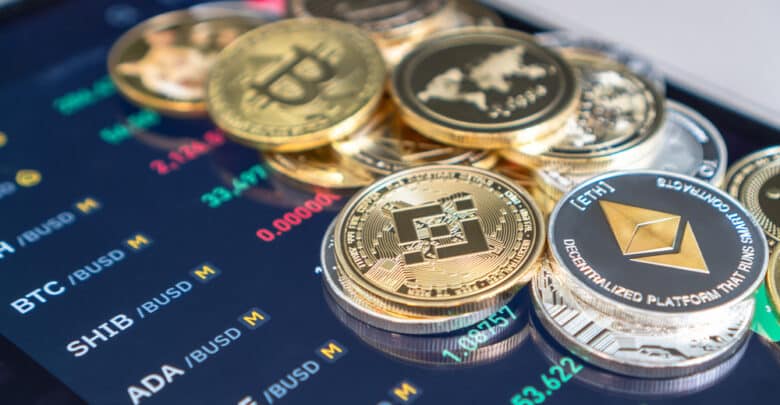What is Wash Trading in Crypto?

Introduction
Investment is a skill that takes time and patience to develop. With the addition of cryptocurrencies in the sector, the traders have more options at their disposal. However, investing in crypto or stocks both carry a considerable amount of risk. When it comes to trading, experienced traders always have an edge on the newcomers.
The main reason for the credibility of the senior investors or professional broker is that they know to understand the market better. The money-making world of investing can be rewarding, but it also contains a considerable amount of traders who are willing to make a profit at the expense of others. By understanding unethical market practices like wash trading, even the newest comer to the investment sector can make better decisions.
What is Wash Trading?
Wash trading is a type of market manipulation technique. There are many traders in the market with enough resources and information at their disposal that they can influence the market sentiment as per their needs. Open markets like stock and crypto exchanges should provide a neutral and equal opportunity environment for all its traders; these dodgy practices can be harmful to others.
The main objective of an investment market is to ensure that the masses can make their savings work for them. The objective way to make money from an investment option is to study the dynamics of the market and try to predict the upcoming incline or decline in the prices of the stocks with the help of technology and data analysis. However, techniques like wash trading can manipulate, inflate, or deflate certain market performance indicators that can misguide others, leading them to losses.
How is Wash Trading Done?
Traders who are willing to create personal profits at the expense of losses for others engage in market manipulation techniques like wash trading. In wash trading, one investor tries to create falsified market indicators by creating false sales and purchase orders. It means that the manipulator is trying to create a false hype around a particular cryptocurrency or stock by creating fake sale orders and purchasing it themselves.
In some cases, wash trading can be a collision between two parties. Where the seller posts a new listing and a predetermined purchaser generates a new order. When the fake transaction is complete, the seller returns all or most of the amount of the purchase order behind the scenes. For the market observers and trading population, it seems that there are still sales and purchase orders happening for that particular asset class that can increase its demand by false means.
What are Market Manipulation Techniques?
Market manipulation techniques are the type of trading practices that are designed to manipulate or misguide market analytics. There are several kinds of market manipulation techniques. The traders who have been around in the sector for quite some time can recognize such threats and make better decisions to protect their investment portfolios. Wash trading is also a type of market manipulation technique.
By buying a self-owned asset on the open market, the wash traders do not gain anything in profits instantly. However, with this technique, they can put themselves at an advantage. Imagine a Whale investor who posts a fake $50 purchase order against a $10 market value asset that he owns. In this case, the fake order poster may have to pay for his/her false order out of their pockets.
But by making such a transaction, the wash trader can create an artificial hype around a particular asset class that was presented in the fake order. On account of the expensive purchase, the impression among the other market traders will hype the value of the asset class for a while based on speculation. The wash trader will take advantage of this artificial hype and sell his remaining stash of the same asset for a massive return.
On the other hand, the investors who purchased that hyped asset class during the temporary price hike will eventually suffer from losses. In most cases, wash trading and other market manipulative techniques try to hype the market value of an asset class based on speculation and aggrandizing. Furthermore, wash trading can also throw off the technical market analysts by inducing artificial market activity and embezzling organic data.
Should Cryptocurrency Traders Oppose Wash Trading?
Due to the lack of regulations on the cryptocurrency trading sector, there are many questionable and implausible investment techniques and practices. On the other hand, for stock market traders, wash trading is visibly discouraged and criminalizes the trading practice. However, there are still many people who consider wash trading a type of smart trading strategy.
But most people who are associated with the industry and who are aware of the investment world agree that wash trading is an unethical practice because it involves false representation, bluff, and losses for a greater percentage of the investors. Wash traders are trying to create a fake increase in the value of a given asset class that is based on speculation and hype.
For the time being, there are not a lot of preventive measures in the cryptocurrency investment platforms to discourage wash trading. At the same time, more investors must be aware of this unfair market practice and demand a change. Data from Chainalysis suggest that thus far, there has been $14 billion worth of illegal trade profits in crypto, and most of these illegal profits are created from the NFT sector.
It is worth mentioning that NFTs or Non-Fungible Tokens that are often touted for being a carrier of fine arts have become a hub for wash traders. Digital Investors have reported cases like the $532 million or 124,457 Ethereum sale of CryptoPunk 9998 NFT. The blockchain transactions revealed that after the public sales, the seller returned ETH against the purchase order of CryptoPunk 9998 for repaying the loan that was drawn out to pay for the digital artwork. As per Chainalysis, between 2021 and 2022, the NFT market activity increased from $350 million to $40 billion, indicating a dangerous increase in the market manipulative techniques in the sector.
Is Wash Trading Illegal?
The cryptocurrency sector is predominantly an unregulated domain. Despite being a $3 trillion investment market, having thousands of variants around the globe, and being around for more than ten years in most countries, the cryptocurrency sector has remained operational without the presence of regulations or legislative clarity. One of the main reasons for lawlessness in the cryptocurrency market is the crypto community itself.
Cryptocurrencies are often introduced to the masses as a means to break away from the control of centralized governments and financial regulators. The concept of decentralization is a highly celebrated phenomenon among digital currency investors. Any attempt to introduce regulations by the government or financial authorities is seen as an invasion and oppressive tactic.
On the other hand, it is also a harsh reality that the governments enjoy a monopoly over the local monetary and investment markets. Furthermore, the focal point of regulations by any centralized authority on the cryptocurrency markets is on imposing taxes on the sector. Under these circumstances, the traders have no choice but to face the financial risks that are created by wash trading and other market manipulative methods.
However, there are some instances where informed digital currency investors can raise their voices against injustice. Bithub is a cryptocurrency exchange that operates out of South Korea. In 2018, Bithub investors protested and boycotted the platform when reports about a $250 million price hike resulting from wash trading were made public.
Anyone new to the investment world or cryptocurrency trading might find the term wash trading a bit complicated and esoteric. Anyone who has already read the above lines would be able to understand the basic working of wash trading. However, some other Market Manipulative practices can throw off newbie investors. For better judgment, here is a quick summary of the most common types of market manipulative techniques:
- Round-Tripping
- Money Laundering
- Layering
- Insider Trading
- Flash Loan
- Pump and Dump/ Share Ramping
- Squeeze
- Printing
- Window Dressing
- Flying Prices
Round-Tripping
Round-tripping is often used as a parallel definition of wash trading. However, technically there are still some differences between the two types of market manipulative techniques. In wash trading is the retail version; meanwhile, round-tripping is a large-scale organized crime. In Wash Trading, one investor decided to conduct one misleading fake purchase order that he or she used only once.
On the contrary, round-tripping is the type of wash trading that has been done more than one time. In most cases, unethical traders employ round-tripping to make a profit in a short trading situation. Financial corporations can commit large-scale wash trading or round-tripping by coming to a mutual understanding a conducting a false trade by forgery of fake orders in hopes of driving the market value high or attracting more investment interest.
Money Laundering
Money Laundering is the process of attempting to convert black money into legitimate income. The threat actors that have earned their profits by participating in illegal activities such as drug trafficking, terrorism assignments, etc. lend the money to the launders that are tasked with converting it into a legally acceptable and untraceable status.
The launders can invest that money into cryptocurrencies or the stock market to generate profits. In some cases, these criminals also use foreign bank accounts to store their illegal business profits to escape prosecution by the legal system. Money launders are much more likely to participate in wash trading as they can finance fake sales easily.
Layering
Layering is also considered spoofing; sometimes, it is a false trading practice where the investors create a fake sale or purchase orders. It can seem a lot like wash trading. However, according to Da Vinci Investment Limited, Layering investors add false or fake trading orders in their books to give falsify the availability of demand for a particular asset among the other traders.
The Layering technique is carried out by purchasing parties which are not planning to execute their fake purchasing orders. These purchasing orders are created just to throw off other investors in the market and create a hyped-up sense of demand in the market for a particular asset class. With Layering, the manipulators are trying to jumble up the supply and demand dynamics that exist naturally in the market.
Insider Trading
Insider trading is a type of unfair trading practice where the employee of a particular organization or any high-level executive releases the classified information for a cost. It is worth noting that in the world of trading, information is priced its weight in gold. There are instances where a company official revealed publically undisclosed information for the benefit of a particular stockholder.
With Insider trading, the biased and premature leak of information can warn one particular stock owner about the upcoming losses or profits. On the other hand, the rest of the stockholders are unable to get access to the same data. In some cases, Insider trading can be done by the internal staff of the company, who can adjust their investment portfolio with the help of the sensitive information that they can acquire working as a part of the organization.
Flash Loan
Flash-loan is a rapid version of Pump and Dump, where the manipulative investors use collateral-free borrowing offered by several DeFi lending protocols. In this case, the funds are borrowed and repaid within seconds. Exploiters draw large sums of cryptocurrency loans to manipulate the market and falsify demand.
Pump and Dump
Pump and dump is another misleading market manipulative technique that takes advantage of the exaggerated market hype. Unethical traders use social media networks, television, or any other mode of publicity to spread inflated or hyperbolic appreciation projections about an asset class. For a pump and dump, it is also necessary that the manipulator owns a considerable amount of the asset that he/she is trying to speculate.
With this type of artificial ramping up, the manipulators try to increase the demand for the asset and add as many new buyers for the asset as possible. On account of the lack of information, many traders end up investing their money into the hyped-up asset, and as a result, the price of the asset starts to hike up exponentially.
However, when the manipulators are sure that they cannot hype the price anymore, they sell their massive reserves of the asset and drive its price down to near zero or many times lower than before.
Squeeze
According to the regulatory manuals published by legislators at the Bank of England, the Squeeze happens when an investor tries to acquire a dominant position for an asset class to force other investors to purchase it at a price higher than before. In simple words, a squeeze is a type of manipulative market technique where one investor purchases a huge percentage supply of a stock or a cryptocurrency from the open market.
After becoming a high-volume investor or a majority shareholder, the squeezer can now decide the new price for the asset class. Therefore, the other investors who want to purchase the stock or cryptocurrency have no choice but to purchase it from the squeezer for a higher price tag. Sometimes, a squeeze is also called a corner among the investors.
Printing
Printing is another type of market manipulative technique that closely resembles wash trading. In WT, the manipulative investor tries to drive up the demand for an asset class by generating fake purchase and sale orders. On the other hand, for printing, the unethical investor spreads the information about a fake purchase that is usually with a hyped-up price tag.
In reality, in contrast to the fake news about speculative purchases, no real transaction has occurred in the market. Due to the presence of social media networks, printing has become very easy to conduct. Big Companies can sometimes hire social media influencers to spread fake and misleading news that can result in manipulating the investment decisions of unsuspecting investors.
Window Dressing
Window dressing is a rather sophisticated market manipulative technique. The experienced traders own the information and the technical scales that a greater number of traders are using to make their investment decision. In window dressing, the manipulative traders try to hype up the closing price of their selected asset class. In comparison to wash trading and printing, it is very difficult to detect window dressing.
Flying Prices
Flying prices also have very close proximity to wash trading. For flying prices, the issuer of a security or a cryptocurrency can spread rumours about a hyped-up or high-profile purchase that has no basis in real life. It is worth noting that when a stock issuer or a cryptocurrency project makes such a claim, they should possess a legally binding agreement or purchase order to abstain from qualifying as a flying price attempt.
Conclusion
Market manipulation techniques are not only unfair and unethical, but they also decrease the credibility of an asset class, broker, or financial organization in the long run. To retain the market confidence of the cryptocurrency sector, it is important that more digital currency investors are aware of these techniques, and they demand internal regulatory changes in exchanges and blockchain issuers to mitigate financial risks.
Tokenhell produces content exposure for over 5,000 crypto companies and you can be one of them too! Contact at info@tokenhell.com if you have any questions. Cryptocurrencies are highly volatile, conduct your own research before making any investment decisions. Some of the posts on this website are guest posts or paid posts that are not written by Tokenhell authors (namely Crypto Cable , Sponsored Articles and Press Release content) and the views expressed in these types of posts do not reflect the views of this website. Tokenhell is not responsible for the content, accuracy, quality, advertising, products or any other content or banners (ad space) posted on the site. Read full terms and conditions / disclaimer.







